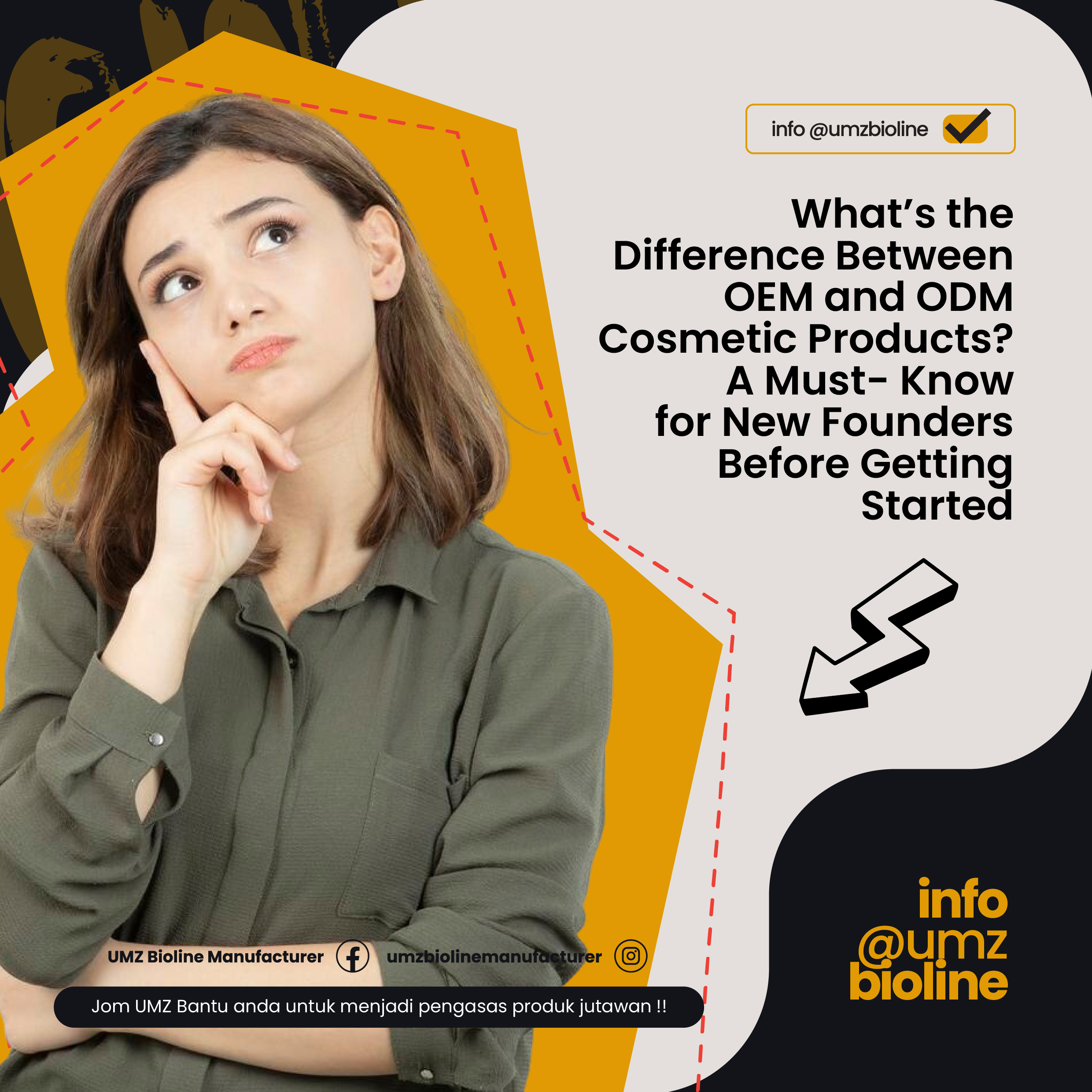If you’re planning to launch your own cosmetic brand, you’ve probably come across two common terms: OEM and ODM. They sound similar, but understanding the difference can save you time, money, and unnecessary confusion later on.
Many new founders make the mistake of choosing the wrong production model simply because they don’t know what these terms really mean. In this article, we’ll explain what OEM and ODM cosmetic manufacturing are, how they differ, and which option might be best for your brand.
What Does OEM Mean in Cosmetics?
OEM: Original Equipment Manufacturer
OEM means the manufacturer produces cosmetics according to your brand’s specific requirements. You decide everything — from ingredients and packaging to texture, fragrance, and color.
In other words, OEM is ideal if you want a fully customized cosmetic product under your own brand name.
Example:
Let’s say you want to launch a two-way cake foundation with a certain coverage level and long-lasting finish. With OEM manufacturing, the factory will:
- Develop a custom formulation based on your brief
- Conduct stability and safety tests
- Handle KKM (Ministry of Health Malaysia) registration
- Package it under your brand name
It’s your concept, your ingredients, and your design — the factory simply makes it happen.
Best for:
- Founders who already have a clear product idea
- Brands that want exclusive, unique formulations
- Long-term brand building with strong identity
What Does ODM Mean in Cosmetics?
ODM: Original Design Manufacturer
ODM means the manufacturer already has ready-made cosmetic formulas and packaging. You can choose an existing product, customize the label, and launch it under your own brand.
This option is faster and more affordable since the R&D and formulation are already done.
Example:
You want to start a skincare line quickly. Instead of formulating from scratch, you can select an existing ODM serum that’s already tested and stable. The factory will:
- Rebrand it with your logo and design
- Help with documentation for registration
- Produce in smaller quantities (lower MOQ)
You get a professional, market-ready product — without waiting months for new R&D.
Best for:
- New founders with limited budget or timeline
- Startups testing the market before scaling up
- Entrepreneurs who want to expand product range quickly
How to Choose Between OEM and ODM
Consider Your Budget
If you’re just starting out, ODM is a safer and faster choice. You can test the market with a smaller budget.
If you already have capital and a clear brand direction, OEM gives you more control and exclusivity.
Think About Your Brand Identity
Do you want to build a long-term brand with unique products? Go for OEM.
If you’re testing market response or want to launch multiple SKUs quickly, ODM is more practical.
Choose a Reliable Manufacturer
Whichever route you take, partnering with an experienced and certified OEM/ODM factory is key. The right partner will guide you through:
- Product formulation and testing
- Packaging design and compliance
- KKM registration process
- Quality control and production
Why Work With UMZ Bioline Manufacturer
UMZ Bioline Manufacturer has years of experience producing both OEM and ODM cosmetic products, including skincare, makeup, and personal care.
Our team provides complete support — from concept development to final product registration — helping founders build high-quality brands that meet market demand.
Conclusion
Understanding the difference between OEM and ODM helps you make smarter business decisions. Whether you’re after full customization or a quick-to-launch product, both options can help you grow your cosmetic brand the right way.
If you’re interested in creating your own product, contact UMZ Bioline today.

